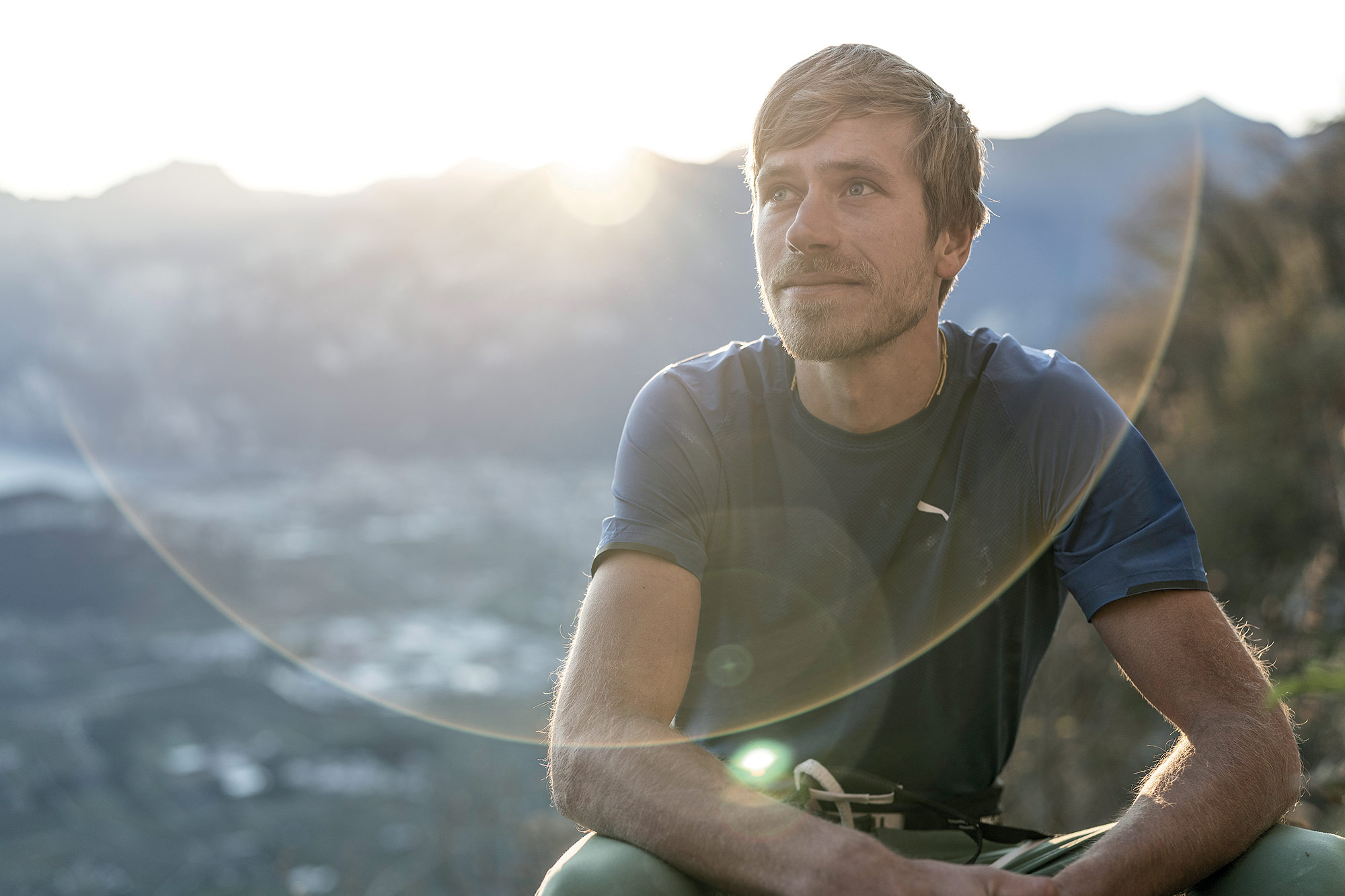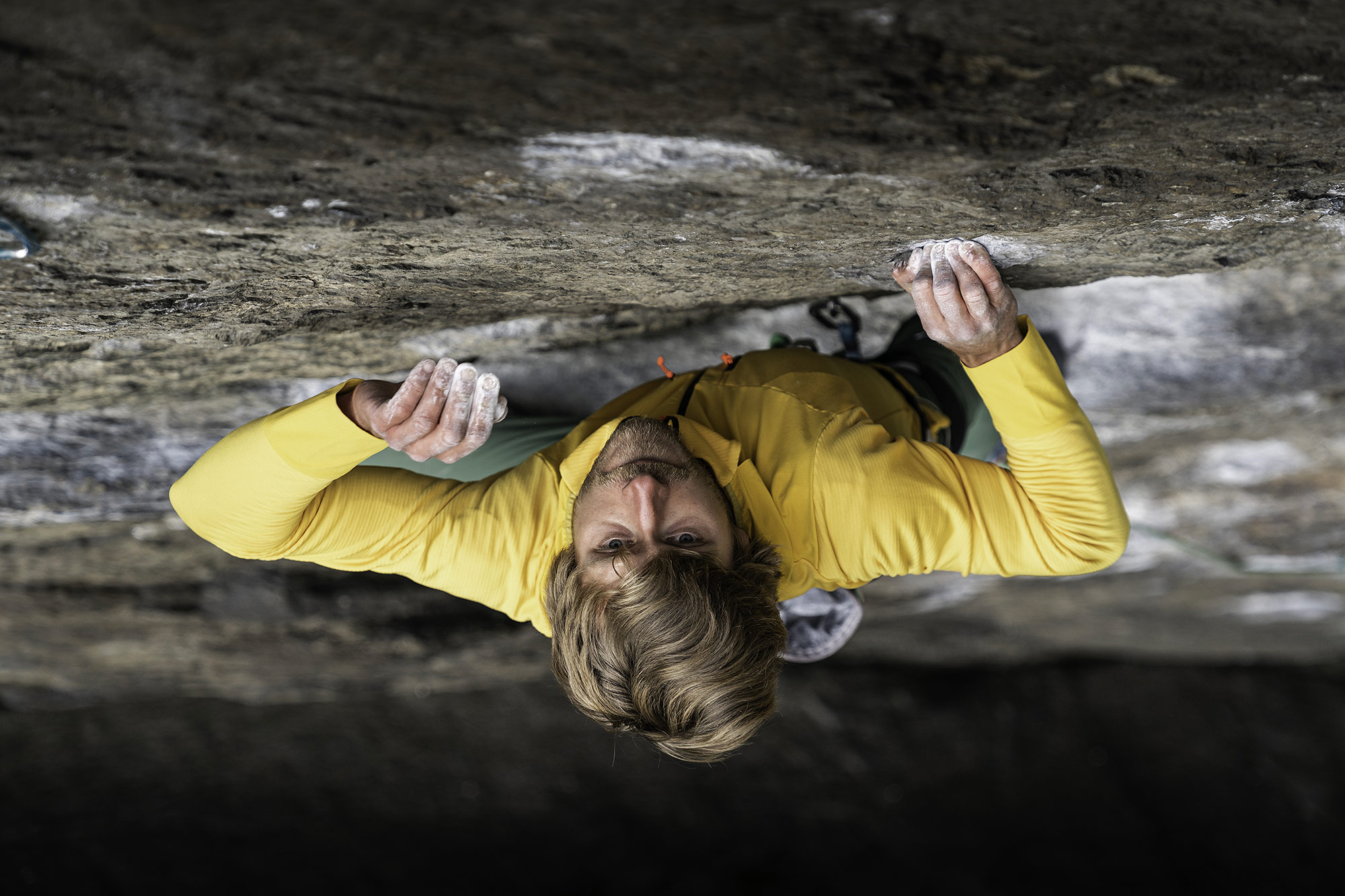By Lisa Misconel
Photos Matteo Pavana

Simon Messner and Martin Sieberer’s first silent ascent in Karakorum.
It’s not what you climb, but how you climb it
The new first silent climb of Simon Messner and Martin Sieberer in Karakorum
Seven hundred meters to go to the summit of the untouched Yernamandu Kangri, 7180m, Karakorum. Simon and Martin are there, sitting next to each other, in silence. If one of the them would say “Enough, let’s go back” the other would agree. Instead, although perhaps thinking it, no one says anything. The two, in silence, continue to climb in half a meter of snow towards the summit with the little energy they have left. The fog envelops them, it is the first ascent.
“You don’t inherit mountaineering” I seem to remember Simon Messner said in an interview some time ago. A very big last name, a silent climbing. Talking to Simon about mountaineering makes you understand what that term really means today, where competitiveism and egocentrism often obscure its purity. Perhaps because Italian is not his first language, or perhaps by choice, when he talks about his exploits he refers to them with the term “nice stuff”. Not records, FKTs, first ascents or feats… Nice stuff.
It was July 25th when Simon, part of the Salewa People team, together with his faithful companion Martin, first climbed a still unclimbed 7000 peak in Karakorum. Three thousand meters of elevation gain in three days, a line to find and climb relying only on your own strength.
Let’s start from the end. It’s been two years now since you and Martin reached the summit of Yernamandu Kangri. A first time for you above 7000m, but a first time for the peak to be climbed. What was it like to overcome a new limit, what feelings did you have, what went through your mind at that precise moment?
There must have been 30 metres, full of snow. To the north there is a snow frame. It was a precious moment, it was foggy and as often happens we saw nothing at all. I thought, before leaving, that it would be a strong moment, and it was, but we also knew that we still had to go down, especially without a rope. (The simple rope just helped us on a mental level, but if we had fallen into a crevasse we would have had no escape). We had a lot of weight on us, and going down was more tiring than going up, it’s strange, but it’s always like that: you’re tired, your concentration is lacking and in the end you’re far from civilization and no one can help you. We had had that mountain in mind for a few years, but we had never really thought about facing it. It was very difficult to find photos and information from other expeditions and we had to wait a long time for the visa to enter Pakistan, which arrived three weeks before departure. In the end it worked out well. I was very happy and curious to go to that part of Pakistan, the south, Karakorum: very green, the people are kind. We arrived at the base camp, where the last expedition had arrived in 1981. We didn’t see anyone, exactly what we were looking for. Only one snow leopard came to visit several times, but not even a trace of people. Everything was great. We felt good, strong, but the weather didn’t agree. It snowed all day, we stayed at base camp playing cards, reading, then finally a window of good weather: three days.
A fast climb preceded by limited acclimatization. 3000 meters of elevation gain in three days.
We started out thinking “let’s try as long as we can keep going.” We moved forward quickly, maybe too quickly. I didn’t think it was possible to climb 1000 meters in a single day at those altitudes with those conditions and difficulties. However, I think that those were the only conditions to be able to complete the climb: when we were at the top the weather had already changed. Three days that we used to the minute, reaching the limit of our capabilities. At a certain point, sitting on the base of the final wall, I remember well that we were sitting on the ice feeling very tired. I’m sure that if someone would have said “Enough, let’s go back” the other would have agreed without saying a word. Instead, no one said anything. We thought it, but we didn’t say it. So we moved on, in silence, it was strange. There was a bit of pressure, that final wall didn’t seem easy and we were very tired with the half meter deep snow slowing us down at every step. I would say, and Martin would agree, that if we had brought even the lightest rope we wouldn’t have made it: 2-3kg more would have exhausted us before completing the project. It was a borderline climb.
Can you tell us about the expedition through 6 important moments, from choosing your destination to when you returned home?
1. In Europe, when we got the mail with our visas for Pakistan, everything changed. At that moment both Martin and I said “come on, let’s go now”.
2. The approach, which went very well: we never got stuck, we were fast, without discomfort or physical problems.
3. Getting to base camp, which didn’t exist. It was a place near the glacier that seemed suitable to us. The next day we left to look for the line by crossing the glacier.
4. Waiting day after day because the weather wasn’t good. Then when it got better, being able to go out.
5. Climbing up, tracing the line, the connection between us. We took turns to move forward, even 100 meters far away from each others, without saying anything, we took turns as if it were the most natural thing to do.
6. The moment on the final wall, 700 meters with a slope of 60 degrees. The ice found there is very very hard, almost concrete. We didn’t talk for hours while climbing, everyone went up for themselves up to the ridge.
(7. Getting to the top is a little dream come true for both of us.)
Talking about Martine, you have been a close knit and tested team for years which is maybe also one of the elements that has allowed the success of this expedition. How long have you been climbing together, what makes you such a close team?
I met Martin 4 years ago, just before leaving for my first time in Pakistan in 2019. I immediately noticed that he was very strong, that he is someone who wants to do things and does them without much talking. After the first climb together everything started, we did a lot of nice stuff together even in the Alps such as the Bonatti on the Matterhorn in one day from the valley. It is very important to find a person who has more or less the same motivation as you. Not with all teammates you have this type of connection. When I climb I never have to think about him, I have complete faith in his abilities and I guess he thinks the same about me, that’s how it works. Perhaps, indeed certainly, the fact that Martin, like me, climbed solo in the past helps a lot, because we are more or less at the same level and if he can climb unroped, I can do too.
Another key word for this undertaking is alpine style. What meaning do you think the word mountaineering should have?
Mountaineering is an activity with a lot of history. Today we no longer know how to see things, understand how to climb mountains… The how is very important. Most people can afford to climb mountains with a lot of outside help, so to speak. But for me mountaineering is something different, it’s trying to climb a line I have in mind with the strength I have. And alpine style means do that without the help of others, if not the one of your partner. Mountaineering is not a sport, it has connections to sport, but it is not a sport. It’s very difficult to measure it, conditions change as does the weather. Talking about Pakistan, K2 for example, which is very close to where we were, it’s a totally different world there, not necessarily negative, but it’s something else. Two, three, four hundred people climbing to the top together using ropes, oxygen, helicopters, camps. It’s not necessarily wrong, but it’s different. To date, both for Martin and for me, the desire to go on an eight-thousander is zero, but truly zero. He has nothing to do with going to the mountains. If you are alone in the mountains, every decision is up to you, but if you go in a group everything changes: one decides and the others just follow.
Your media exposure has, over the years, increased since the early years when you climbed without being followed by anyone. What has changed and why?
As a child it was normal for me to be exposed to the media because of my father’s life. It was kind of normal for us as children, on the other hand I knew that media exposure can help but it’s not always a positive thing. I always read my name on two specific sites, I knew I was known in mountaineering and for this reason I always had to be careful. People have always watched me, noticing every false step and so I decided to go my own way, to express myself and in the end those first years were the most beautiful period of time, totally free and carefree. In those years I learned the fundamental things, I went free soloing a lot, which I would no longer do today, and I grew up like a normal mountaineer. Then I don’t know what changed, I improved and grew, I did nice stuff, I don’t know. However, it is always important to keep a part of what you do, just for you.
In this interview there are many points that I like to reread, maybe because Simon managed to express things that I had never heard before, maybe because the way in which he did it is different and sincere. In the days preceding the interview, maybe due to the particularly intense attention to the topic, I often wondered what mountaineering was. Now I know a little more.
